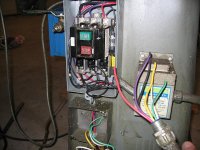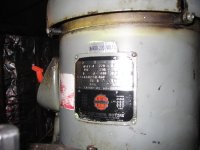arik434
Plastic
- Joined
- Nov 16, 2008
- Location
- Buffalo, NY
Been searching for a while and finally found my bridgeport. It is a series 1, 2 HP variable speed with x axis power feed and DRO.
I found it at a local shop where it was still running--which was nice. I picked it up a couple days later and they had already unhooked it. There are 6 wires coming out of the cord and I'm wondering if someone can help me to hook this up. The wire colors are:
Black, purple, yellow, red, white and green.
For now, I plan to run the mill on a static phase converter. At some point I will probably swtich to a rotary style, but for now I will try to make due with what I have. The static phase converter is currently powering my 10" heavy south bend lathe. The lathe seems to work great with this converter.
Thanks in advance to someone who can help point me in the right direction.
I found it at a local shop where it was still running--which was nice. I picked it up a couple days later and they had already unhooked it. There are 6 wires coming out of the cord and I'm wondering if someone can help me to hook this up. The wire colors are:
Black, purple, yellow, red, white and green.
For now, I plan to run the mill on a static phase converter. At some point I will probably swtich to a rotary style, but for now I will try to make due with what I have. The static phase converter is currently powering my 10" heavy south bend lathe. The lathe seems to work great with this converter.
Thanks in advance to someone who can help point me in the right direction.






